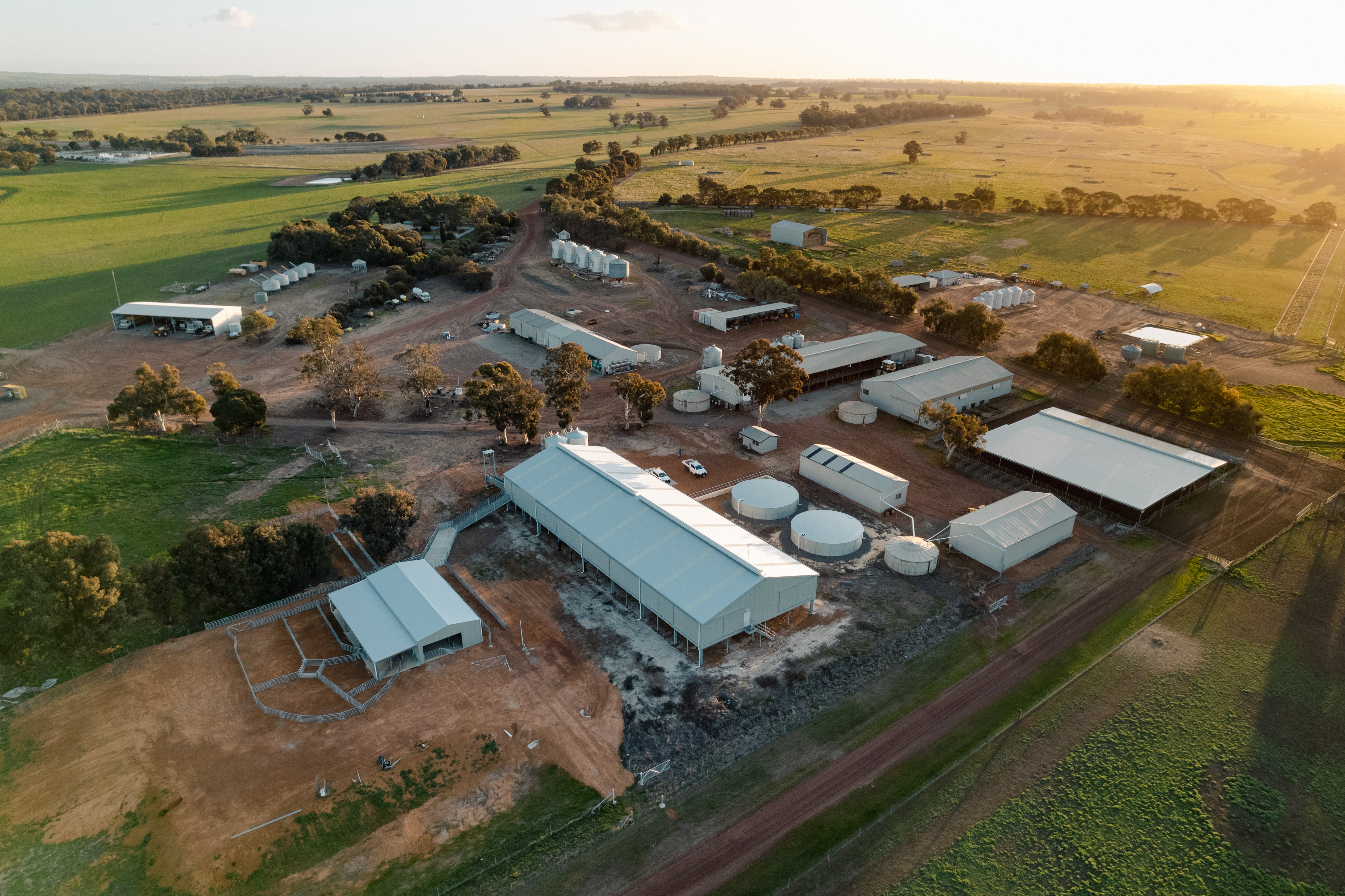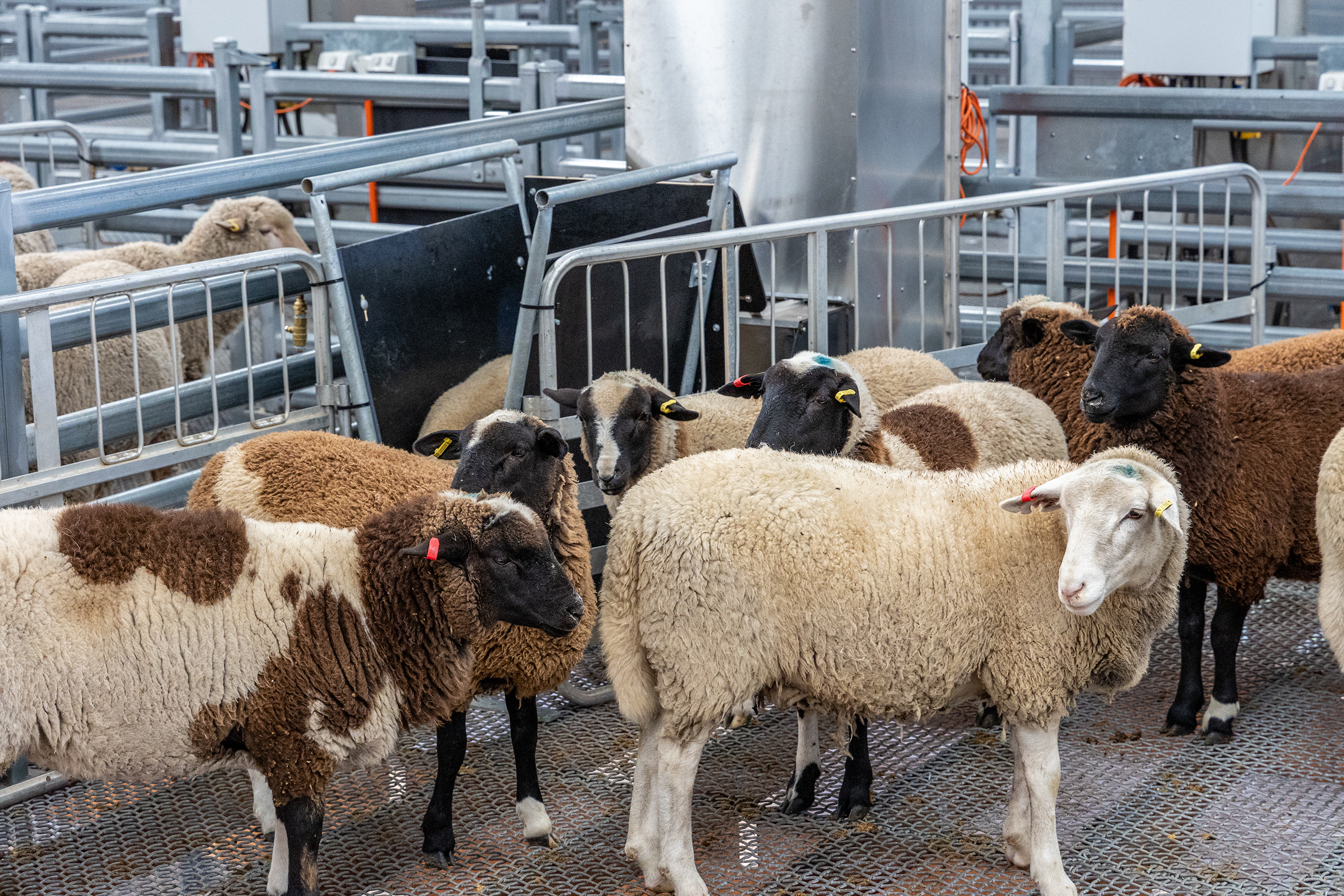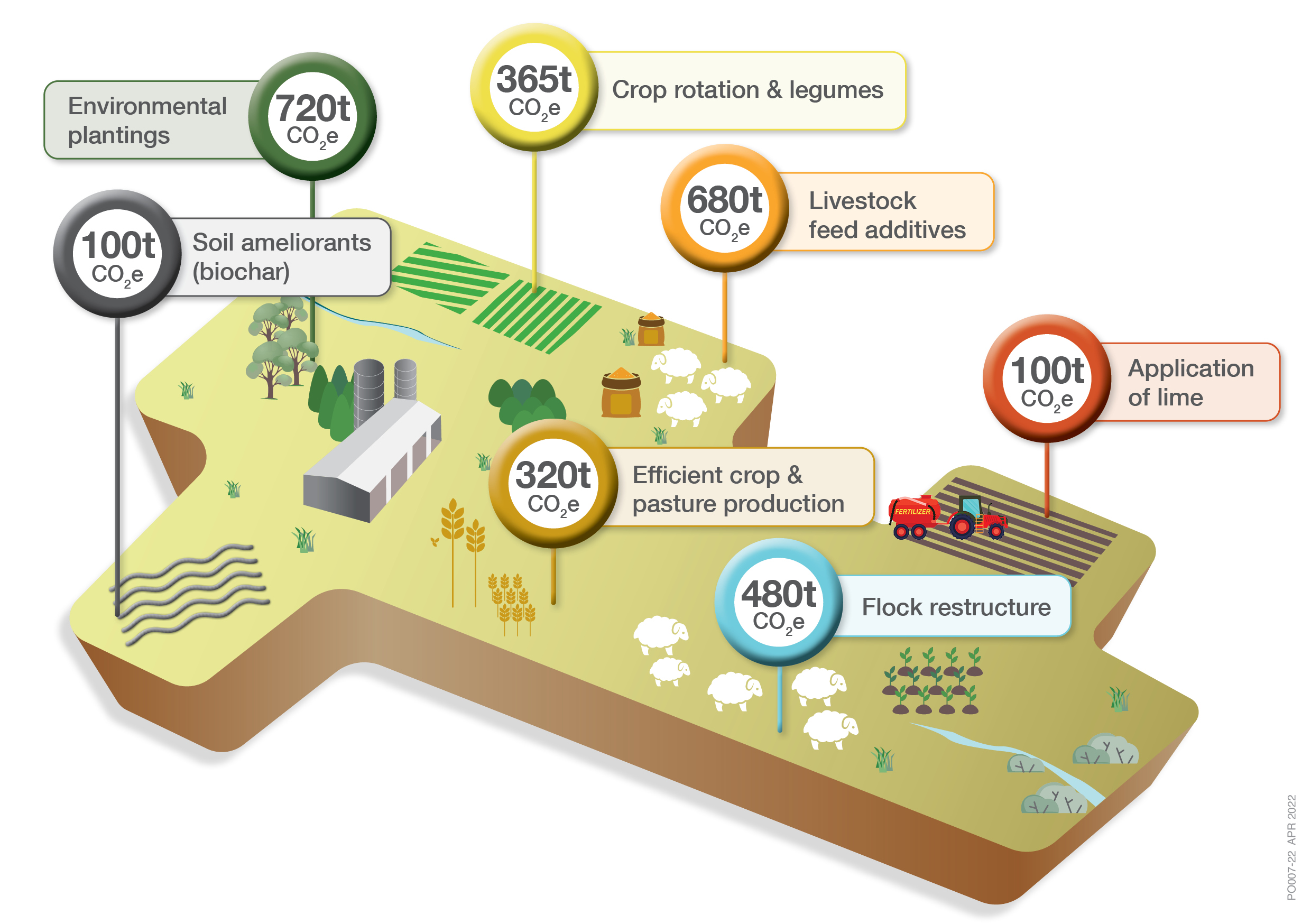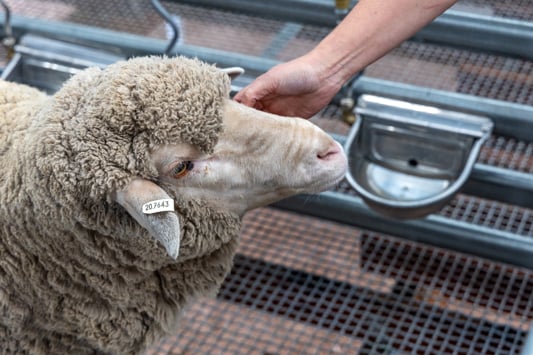
Katanning is a key location for the department’s livestock, soils, and plant research in Western Australia's (WA) Great Southern.
The research station is a sheep, pasture, and cropping research hub, which opened in 1982 and is situated 8 km east of Katanning. It spans more than 2,000 ha with approximately 1,575 ha arable for cropping and grazing and capacity for 7,500 sheep.
The station is home to Australia’s biggest Sheep Feed Intake Facility and showcases the digital agriculture technologies and management systems that will lift productivity and lower greenhouse gas emissions from mixed farming operations in WA.

Research
Research conducted at the Katanning Research Station includes:
- genetics (breeding values) of feed intake efficiency in sheep.
- impact of feed supplements and forage combinations on methane production of sheep.
- evaluation of novel pasture species to develop livestock systems of green feed year-round.
- a saltland rehabilitation program that aims to halt and reverse the expansion of salinity and prevent a further rise in groundwater. This includes components of revegetation for native biodiversity as well as saltbush and salt – tolerant understorey species for out of season livestock feed.
- management and monitoring of the Genetic Resource Flock (GRF), part of a national program providing breeding values for the sheep industry.
- management of the Yardstick flock, in partnership with industry. This is part of the national sire evaluation program, where progeny of leading merino sires are measured and benchmarking data is provided to breeders as well as contributing to the improvement in accuracy of Australian Sheep Breeding values.
- lowering greenhouse gas (GHG) emissions to achieve carbon neutrality on-farm by 2030. The WA government has invested $4.24 million into researching mitigation in agriculture. KRS Carbon Neutral 2030 is demonstrating effective and affordable mitigation techniques and strategies for WA broadacre farmers, that will maintain a farm’s sustainability and productivity.
Katanning Research Station projects and initiatives
Katanning Research Station showcase booklet 2023
Facilities
- an animal house with 160 individual pens for collecting methane measurements
- 50 paddocks (from 2 to 50 hectares) – including 67 one-hectare lambing plots with water and feed troughs and moveable straw bale windbreaks
- sheep yards and two shearing sheds
- a range of silos for grain and pellets
- large hay storage shed
- range of mechanical sheep handling devices
- trucks with stock crates and feed trailers
- meat processing facility, cool room, and freezers
- standard commercial broadacre cropping farm machinery
- fully mobile small research-plot gear.
All facilities and laboratories are bio-secure and fitted with amenities to control and minimise potential biosecurity risks.
The research station’s Sheep Feed Intake Facility (SFIF) opened in 2022. It is a 940 m2 facility that can hold up to 300 animals, the biggest of its kind in Australia. The facility houses 20 sheep pens (up to 15 per pen). Sheep are sociable animals, so having them housed in groups is the best practice.
This facility features:
- A semi-controlled environment, including technology to continuously monitor temperature, air quality, airflow, and wind speed, as well as an automated feed delivery system digitally controlled via Bluetooth.
- An automated feed delivery system — the first in Australia used in sheep research. This system is custom-built and can blend diets from 4 different sources with the capability to allocate different diets to each pen. As the sheep approach the feed unit, their RFID tag is read, and the feed allocation is calculated for sheep individually. The combined capability to blend and weigh diets for 300 sheep through an automated system significantly increases the research capability through labour and resourcing efficiencies. Performing individual feed intake trials in group pens also allows sheep to express more social behaviours.
- State-of-the-art portable accumulation chambers are used to measure the methane emissions of individual sheep.
- A dual-energy x-ray absorptiometry (DEXA) machine objectively measures the meat, bone, and fat composition of live animals. This data shows changes in body composition over time.
A LoRaWAN (Low Power, Long Range Wide Area Network) ‘smart farm’ network is installed across the site, complete with a smart farming hub allowing for 24/7 monitoring of weather conditions, soil moisture and tank levels. The network includes:
- 10 soil moisture sensors
- 3 mobile weather stations
- one station connected to the Bureau of Meteorology network
- water tank sensors to provide information on tank levels that supply water for livestock
- visualisation of the information in a customised ‘dashboard’ that shows the key information on one page and updates regularly as new data comes in.
The department’s town office is situated at 10 Dore Street, Katanning.
Research scientists and technical officers at the office focus on field and laboratory experiments on applied grains and farming systems for broadacre crops and resource management.
Research focuses on:
- cereal agronomy - phenology of germplasm for adaptation to earlier (and later) sowing opportunities and timing crop development to avoid frost
- nutrient dynamics of the crop — sequences to monitor nitrogen, phosphorus and potassium crop nutrition and develop crop management decision-making tools.
Facilities
Facilities at the town office include:
- glasshouse with 3 separate air-conditioned sections
- sheds and dirty labs to receive, store, and process plant, grain and soil samples collected from research trials across southern WA grain-growing regions
- controlled environment storage areas to maintain plant and grain samples
- drying ovens: one walk-in, two wall ovens, and a range of benchtop ovens
- walk-in cool room
- offices for the research team and conference room capacity for 65 people.

Greenhouse gas emissions baseline
The department identified the Katanning Research Station (KRS) as a significant greenhouse gas (GHG) emitter, offering the opportunity to better understand the emissions arising from agriculture, and particularly livestock production. This demonstration project contributes to the WA Government’s commitment to emissions reduction and the sustainable mitigation of climate change.
The department developed a strategy focused on practical techniques and methods for mitigating greenhouse gas emissions from the livestock industry in WA. The strategy has 2 specific aims:
- To lower net emissions from the Katanning Research Station and achieve carbon neutrality on-farm by 2030
- Utilise the Katanning Research Station as a practical demonstration site to provide and support the application of tested carbon-neutral options for WA broadacre farmers.
Contact us
-
Katanning Research Station453 Katanning-Nyabing Rd
Katanning WA 6317
Postal: PO Box 768
Katanning WA 6317

